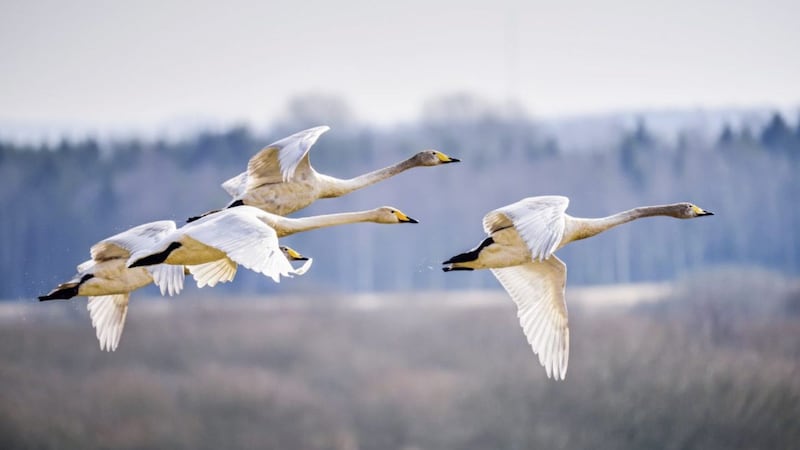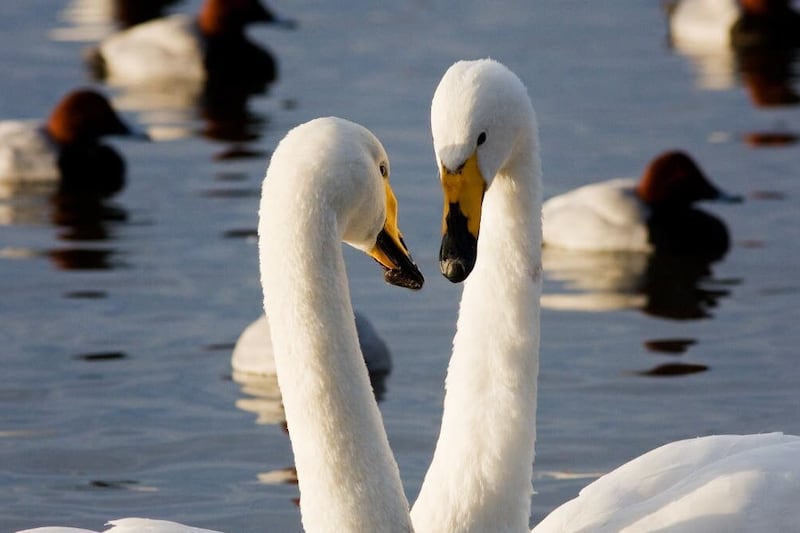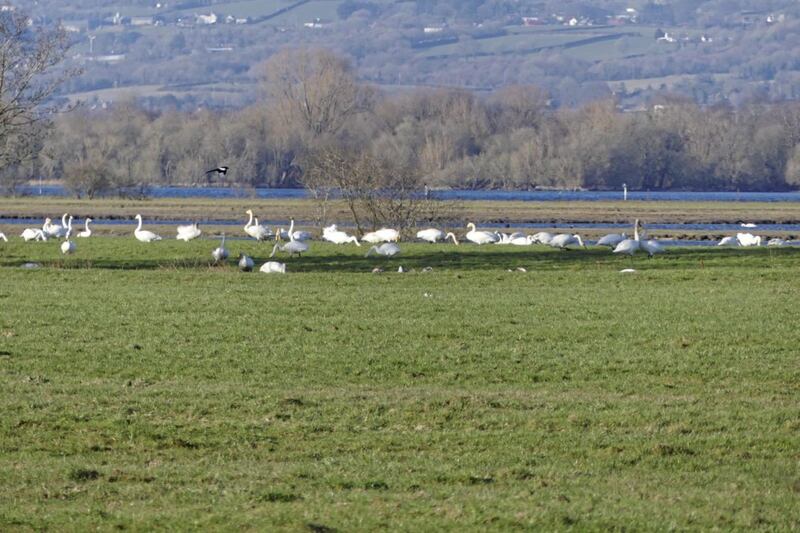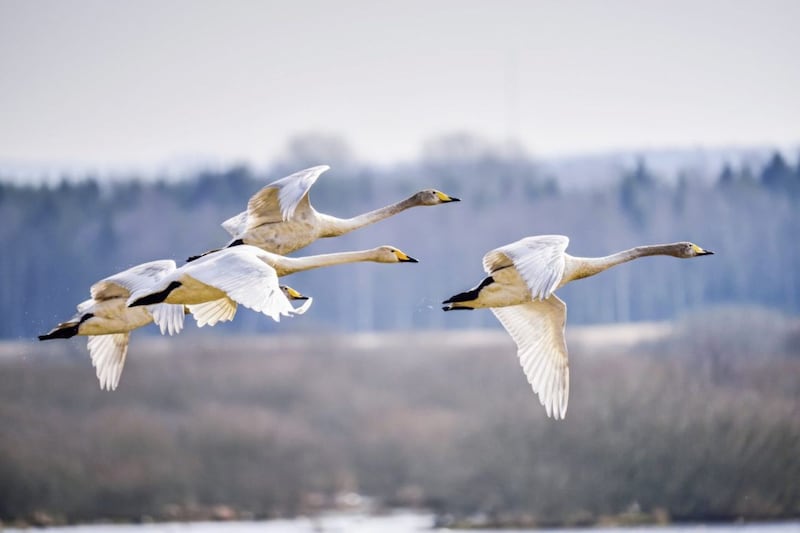AT THE same time as storm Ophelia was making landfall along the Cork and Kerry coastline recently, my eyes were drawn skyward towards a 20-plus flock of whooper swans, also about to make landfall, after an exhausting journey from their breeding grounds in Iceland.
The noisy honking and trumpeting calls signalled their relief at a safe arrival and joy at the prospect of settling to feed in the lakes and lush fields of Ireland for winter.
Their south-western flight path suggested these birds were probably on route to Bunduff lough, near Mullaghmore, Co Sligo, a favourite meeting point for many whoopers before dispersing to other suitable wetland sites.
Cygnus cygnus is distinguished from our resident mute swan by its smaller frame, yellow bill and black tip. It lacks the forehead knob of the orange-billed mute and in water, the whooper’s neck is more upright.
Unlike the mute, it is a vociferous bird, as its Irish name, Eala glórach, noisy swan, suggests.
There are many places we can view whoopers. Large flocks feed along the shores of Strangford Lough, Lough Foyle, Lough Swilly and along western Lough Neagh.
Flooded fields from the Blackwater River near Caledon, Co Tyrone are often used by whoopers and Co Fermanagh also provides important wintering grounds, especially around Upper Lough Erne, where they can be seen anywhere from north of Newtownbutler to the western shores of the lough running from Bellanaleck to Derrylin.
Legends of enchanted swans are ingrained in European and Irish folklore, nowhere more so than in the story of the Children of Lir, where Aoife, third wife of Lir, becomes jealous of her stepchildren and takes them to Lough Derravaragh in Co Westmeath to kill them.
Unable to do this, she uses magic to turn them into swans, condemning them to remain in this state until they hear a bell announcing the voice of Christianity in Ireland.
The four children retain powers of speech but remain as nomadic swans for 900 years, moving to and from the Sea of Moyle, back to Mayo where finally they hear the bell of Christianity from a church built by St Mochaomhóg.
With the curse over, the swans regain their human form but are old and withered. The legend goes that when the Children of Lir died, Mochaomhóg dreamed he saw four beautiful children flying over the lake, going straight up to heaven.
The bugling calls above drew me to the term ‘swan song’, the metaphorical phrase for a final gesture before death or retirement, derived from the myth that swans sing mournfully before they die.
This story is mentioned by Greek philosophers Plato and Aristotle but Pliny the Elder believed it to be untrue, writing in Natural History, AD 77; "Observation shows that the story that the dying swan sings is false.’’
Poets and playwrights, however, continued to refer to this belief. Chaucer, in Parliament of Fowles writes, "The lalous swan, ayens his deth that singeth. (The jealous swan, sings before his death) and Shakespeare used the image in The Merchant of Venice when Portia exclaims, "Let music sound while he doth make his choice; Then, if he lose, he makes a swan-like end, fading in music.’’
In Othello, the dying Emma says, "I will play the swan, / And die in music.’’
Poet Samuel Taylor Coleridge poked fun at the legend in his poem On a Volunteer Singer, writing, "Swans sing before they die; ‘twere no bad thing/ Should certain persons die before they sing!"
Early that October morning, two powerful works of nature were evident, one more welcome than the other.








